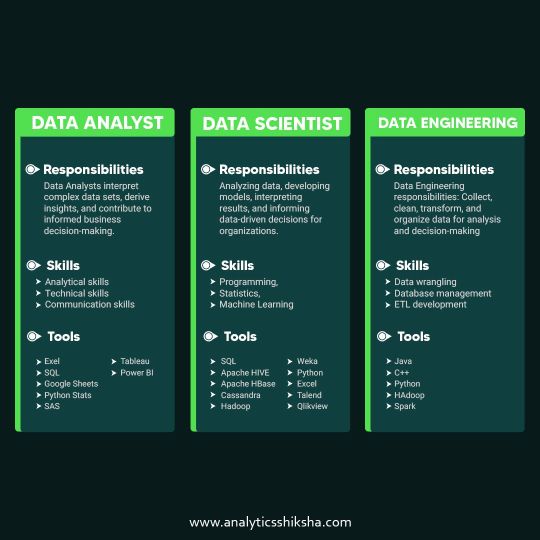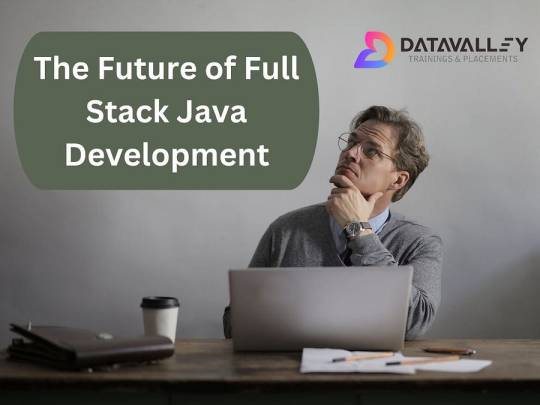#DataExperts
Explore tagged Tumblr posts
Text

🌟 Step Into the Future with Azure Trainings!
Dreaming of a successful career in IT? At Azure Trainings, we specialize in empowering students and professionals with in-demand skills like Azure Data Factory, Data Engineering, and Azure DevOps.
✨ Why Azure Trainings?
Expert trainers with real-world experience
Hands-on projects to build your confidence
Personalized guidance to help you succeed
📞 Call: +91 98824 98844 📧 Email: [email protected] 🌐 Visit: www.azuretrainings.in
🚀 Let’s turn your dreams into reality!
#AzureTrainings#LearnAzure#DataEngineering#AzureDevOps#CloudComputing#ITTraining#CareerGrowth#TechSkills#Hyderabad#AzureDataFactory#ProfessionalDevelopment#HandsOnLearning#UpskillYourCareer#TechEducation#DataExperts
0 notes
Text
Why Do So Many Big Data Projects Fail?

In our business analytics project work, we have often come in after several big data project failures of one kind or another. There are many reasons for this. They generally are not because of unproven technologies that were used because we have found that many new projects involving well-developed technologies fail. Why is this? Most surveys are quick to blame the scope, changing business requirements, lack of adequate skills etc. Based on our experience to date, we find that there are key attributes leading to successful big data initiatives that need to be carefully considered before you start a project. The understanding of these key attributes, below, will hopefully help you to avoid the most common pitfalls of big data projects.
Key attributes of successful Big Data projects
Develop a common understanding of what big data means for you
There is often a misconception of just what big data is about. Big data refers not just to the data but also the methodologies and technologies used to store and analyze the data. It is not simply “a lot of data”. It’s also not the size that counts but what you do with it. Understanding the definition and total scope of big data for your company is key to avoiding some of the most common errors that could occur.
Choose good use cases
Avoid choosing bad use cases by selecting specific and well defined use cases that solve real business problems and that your team already understand well. For example, a good use case could be that you want to improve the segmentation and targeting of specific marketing offers.
Prioritize what data and analytics you include in your analysis
Make sure that the data you’re collecting is the right data. Launching into a big data initiative with the idea that “We’ll just collect all the data that we can, and work out what to do with it later” often leads to disaster. Start with the data you already understand and flow that source of data into your data lake instead of flowing every possible source of data to the data lake.
Then next layer in one or two additional sources to enrich your analysis of web clickstream data or call centre text. Your cross-functional team can meet quarterly to prioritize and select the right use cases for implementation. Realize that it takes a lot of effort to import, clean and organize each data source.
Include non-data science subject matter experts (SMEs) in your team
Non-data science SMEs are the ones who understand their fields inside and out. They provide a context that allows you to understand what the data is saying. These SMEs are what frequently holds big data projects together. By offering on-the-job data science training to analysts in your organization interested in working in big data science, you will be able to far more efficiently fill project roles internally over hiring externally.
Ensure buy-in at all levels and good communication throughout the project
Big data projects need buy-in at every level, including senior leadership, middle management, nuts and bolts techies who will be carrying out the analytics and the workers themselves whose tasks will be affected by the results of the big data project. Everyone needs to understand what the big data project is doing and why? Not everyone needs to understand the ins and outs of the technical algorithms which may be running across the distributed, unstructured data that is analyzed in real time. But there should always be a logical, common-sense reason for what you are asking each member of the project team to do in the project. Good communication makes this happen.
Trust
All team members, data scientists and SMEs alike, must be able to trust each other. This is all about psychological safety and feeling empowered to contribute.
Summary
Big data initiatives executed well delivers significant and quantifiable business value to companies that take the extra time to plan, implement and roll out. Big data changes the strategy for data-driven businesses by overcoming barriers to analyzing large amounts of data, different types of unstructured and semi-structured data, and data that requires quick turnaround on results.
Being aware of the attributes of success above for big data projects would be a good start to making sure your big data project, whether it is your first or next one, delivers real business value and performance improvements to your organization.
#BigData#BigDataProjects#DataAnalytics#BusinessAnalytics#DataScience#DataDriven#ProjectSuccess#DataStrategy#DataLake#UseCases#BusinessValue#DataExperts
0 notes
Text
Optimize Your IoT Project with the Right Database

The Internet of Things (IoT) generates considerable amounts of data, thus requiring a database that is high capacity, multi-format, and real-time analytics. The appropriate database selection is very important for your IoT project's success. Let's explore some popular options:
Time-Series Databases
1. InfluxDB
InfluxDB that is accurately done for time-series data is capable of rapid data input, storage, and retrieval. Its efficient querying capabilities make it a top choice for IoT applications.
2. TimescaleDB
TimescaleDB is an open-source time-series database that works with PostgreSQL which enables SQL functionality, while providing time-series features. It is thus suitable for use in various IoT analytics as well as hybrid workloads.
NoSQL Flexibility
3. MongoDB
This database that is document-oriented gives you the freedom to manage unstructured IoT data in different ways. With its ability to scale and deal with intricate data formats, it can be applied to many IoT uses.
4. Cassandra
Cassandra is suitable for IoT systems that demand a distributed data management solution with low latency, as it was designed to be fault-tolerant and highly available.
Real-Time Insights
Redis
Originally, it was created as a data store for in-memory data structures. Still later it was used by users for IoT applications which require very low latency and very high throughput rates. Besides, it may be used for caching, session management, and real-time analytics.
Other Considerations
Data Volume and Velocity: Evaluate the non-fixed size of your IoT device's data and the processing speed.
Data Types: Disregard the entirety of the types of data that can be produced by IoT devices, to mention a few numerical, textual, and sensor.
Scalability: Adapt a database to the point of large data volume and high complexity.
Cost: Differentiate the databases based on pricing models and the total cost of ownership.
Conclusion
The best data is required for the IoT project to be of good quality and is determined by the exact needs of the project. Taking into account data speed, volume, types, and features, one can choose the database that is most suitable for their IoT application.
Remember: In the case of complex IoT projects, a hybrid approach combining multiple database technologies may be the most effective solution.
1 note
·
View note
Text


In order to become proficient in the field of data, it is crucial to comprehend the differences between Data Science, Data Analytics, and Data Engineering. With this knowledge, you will be better equipped to make informed decisions and take advantage of the opportunities that each field offers.
This mini-series will guide you through the process. Stay tuned!
know more: https://www.analyticsshiksha.com
#datascience#dataanalytics#super30#analytics#ArtofProblemSolving#checkyoureligibilty#super30dataanalyticsprogram#analyticsshiksha#DataVisualization#InformationTechnology#TechInnovation#DataExperts#DataManagement#MachineLearning#Programming#dataandanalytics#dataanalyticstraining#dataanalyticscourse#datasciencejobs#dataanalyst#DeepLearning#Algorithms#DataDriven#careergrowth#career#SuccessStories#ProblemSolving
0 notes
Text

Best Database Management Companies in India
Are you trying to find the top database management services in India? The top database management companies in India that provide dependable and affordable services
#leads generation#DatabaseManagement#datasolutions#datamanagement#database services#DataExperts#datasecurity#data analytics#DatabaseSolutions#DatabaseExperts#DataManagementCompany#DataQuality#DataIntegration#DatabaseAdministration#DataWarehousing#DataGovernance
0 notes
Text
Same-Day Data Recovery Services: Get Your Data Back Today!
#techchef data recovery#techchef#data recovery services#data#data recovery#datarecoveryservices#technology#tech news#datarecovery#the owl house#succession#Dataloss#Dataexperts
0 notes
Text







The pros and cons of outsourcing big data Analytics Outsourcing big data analytics can provide several benefits, including access to specialized expertise, cost savings, and increased flexibility. However, it may also have drawbacks such as potential data security risks, communication challenges, and a loss of direct control over the analytics process. . . ➡️Check out the post to learn more about them. ➡️Let us know if you want to know more points in the comment section below 👉Do not forget to share with someone whom it is needed. 👉Let us know your opinion in the comment down below 👉Follow @Zoof Software Solutions for more information ➡Grow your business with us! . . ✔️Feel free to ask any query at [email protected] ✔️For more detail visit: https://zoof.co.in/
#BigDataOutsourcing#AnalyticsOutsourcing#DataScienceOutsourcing#DataAnalyticsOutsourcing#BigDataSolutions#AnalyticsServices#DataExperts#dataprocessing#datascience#OutsourceBigData#analytics#research#dataanalyst#machinelearning#bigdata#DataAnalyticsExperts#DataOutsourcing#SoftwareCompany#StartUpTechnology#mobilefriendlywebsite#GrowBusiness#WebsiteDevelopment#SoftwareConsultant#ZoofSoftwareSolutions#zoof#zoofinc#MobileAppDevelopment#AwardWinningCompany#BestSoftwareCompany#digitalmarketing
0 notes
Text

Korhan Kuyu'ya Teknoloji Liderliği Ödülü Anadolu Sigorta Genel Müdür Yardımcısı Korhan Kuyu, Türkiye'nin dijital dönüşümüne yön veren isimlerden biri olarak "En Etkin 50 Teknoloji Lideri" ar...

0 notes
Text

Korhan Kuyu'ya Teknoloji Liderliği Ödülü Anadolu Sigorta Genel Müdür Yardımcısı Korhan Kuyu, Türkiye'nin dijital dönüşümüne yön veren isimlerden biri olarak "En Etkin 50 Teknoloji Lideri" ar...

0 notes
Text

Korhan Kuyu'ya Teknoloji Liderliği Ödülü Anadolu Sigorta Genel Müdür Yardımcısı Korhan Kuyu, Türkiye'nin dijital dönüşümüne yön veren isimlerden biri olarak "En Etkin 50 Teknoloji Lideri" ar...

0 notes
Text
The Future of Full Stack Java Development

Full-stack developers, also known as “jack of all trades,” are in high demand in India. They are capable of carrying out the duties of numerous professionals. They earn good money and have many job opportunities with rewarding experiences because of their diverse skills. Full-stack Java programming has a bright future because its popularity is growing and will continue to grow in the coming years.
It’s well known that full-stack developers are proficient in both server-side and client-side programming. They are the professionals who carry out the responsibilities of backend and frontend developers. Despite not always being regarded as specialists, their abilities enable them to handle development tasks with ease. All firms look forward to having a brilliant full-stack developer as a future developer for a number of reasons. They handle a variety of technologies, which enables them to manage more project facets than the typical coder.
An experienced web developer who primarily works with Java programming is known as a Java full-stack developer. The front end, back end, and database layer are the three levels of code that these web developers build. The web development teams are frequently led by full-stack Java engineers, who also assist in updating and designing new websites. Because there is a great demand for Java full-stack developers. Many institutions have seized the opportunity by providing well-thought-out Java full-stack developer courses. You may study full-stack development quickly and become an expert in the area with the aid of these courses.
Java Full Stack Development by Datavalley
100% Placement Assistance
Duration: 3 Months (500+ hours)
Mode: Online/Offline
Let’s look into the future opportunities for full-stack Java professionals in India.
4 things that will Expand the Future Purpose of Java Full-Stack Developers
The Role of a Full-Stack Developer
Full-stack developers work on numerous tasks at once. They need to be extremely talented and knowledgeable in both front-end and back-end programming languages for this. JavaScript, CSS, HTML, and other frontend programming languages are essential. When creating new websites or modifying old ones, Java is a key programming language used by Java full-stack developers. However, backend programming languages consist of .Net, PHP, and Python depending on the projects. The full stack developers are distinguished from other developers by their proficiency and understanding of programming languages. With the availability of the finest Java full stack developer training, students may now easily master a frontend programming language like Java. The full-stack developer is more valuable and in demand when they are knowledgeable in multiple programming languages.
Responsibilities of a Full-Stack Developer
Functional databases are developed by full-stack developers. It creates aesthetically pleasing frontend designs that improve user experience and support the backend. The entire web-to-web architecture is under the control of these full-stack developers. They are also in charge of consistently maintaining and updating the software as needed. The full-stack developers bear the responsibility of overseeing a software project from its inception to its finalized product.
In the end, these full-stack developers also satisfy client and technical needs. Therefore, having a single, adaptable person do many tasks puts them in high demand and increases their potential for success in the technology field. Through extensively developed modules that expand their future scope, the Java full-stack developer course equips students with the skills necessary to take on these tasks.
The full-stack developer salary range
Full-stack developers are among the highest-paid workers in the software industry. In India, the average salary for a full-stack developer is 9.5 lakhs per annum. The elements that determine income typically include experience, location of the position, company strength, and other considerations. A highly skilled and adaptable full-stack developer makes between 16 and 20 lakhs per annum. Full-stack engineers get paid a lot because of their extensive skills, they can handle the tasks of two or three other developers at once.
By fostering the growth of small teams, preventing misunderstandings, and cutting the brand’s operating expenses, these full-stack developers perform remarkable work. Students who take the Java full-stack developer course are better equipped to become versatile full-stack developers, which will increase their demand currently as well as in the future in the industry.
Job Opportunities of Java Full Stack Developers
The full-stack developers are knowledgeable professionals with a wide range of technological skills. These competent workers are conversant with numerous stacks, including MEAN and LAMP, and are capable of handling more tasks than a typical developer. They are skilled experts with a wealth of opportunities due to their extensive understanding of several programming languages.
Full-stack developers are in high demand because they can work on a variety of projects and meet the needs of many companies. The full-stack Java developer course helps students build this adaptability so they can eventually become the first choice for brands searching for high-end developers.
As a result, these are a few key factors improving the future prospects of Java Full Stack developers in India. They are vibrant professionals who are in high demand due to their diverse skill set and experience, and they are growing steadily. The Java full stack developer course can help students hone their knowledge and abilities to succeed in this industry.
Datavalley’s Full Stack Java Developer course can help you start a promising career in full stack development. Enroll today to gain the expertise and knowledge you need to succeed.
Attend Free Bootcamps
Looking to supercharge your Java skills and become a full-stack Java developer? Look no further than Datavalley’s Java Full Stack Developer bootcamp. This is your chance to take your career to the next level by enhancing your expertise.
Key points about Bootcamps:
It is completely free, and there is no obligation to complete the entire course.
20 hours total, two hours daily for two weeks.
Gain hands-on experience with tools and projects.
Explore and decide if the field or career is right for you.
Complete a mini-project.
Earn a certificate to show on your profile.
No commitment is required after bootcamp.
Take another bootcamp if you are unsure about your track.

#dataexperts#datavalley#data engineering#data analytics#dataexcellence#business intelligence#data science#power bi#data analytics course#data science course#java developers#java full stack bootcamp#java full stack training#java full stack course#java full stack developer
2 notes
·
View notes
Text

Korhan Kuyu'ya Teknoloji Liderliği Ödülü Anadolu Sigorta Genel Müdür Yardımcısı Korhan Kuyu, Türkiye'nin dijital dönüşümüne yön veren isimlerden biri olarak "En Etkin 50 Teknoloji Lideri" ar...

0 notes
Text

Korhan Kuyu'ya Teknoloji Liderliği Ödülü Anadolu Sigorta Genel Müdür Yardımcısı Korhan Kuyu, Türkiye'nin dijital dönüşümüne yön veren isimlerden biri olarak "En Etkin 50 Teknoloji Lideri" ar...

0 notes
Text

Korhan Kuyu'ya Teknoloji Liderliği Ödülü Anadolu Sigorta Genel Müdür Yardımcısı Korhan Kuyu, Türkiye'nin dijital dönüşümüne yön veren isimlerden biri olarak "En Etkin 50 Teknoloji Lideri" ar...

0 notes
Text

Korhan Kuyu'ya Teknoloji Liderliği Ödülü Anadolu Sigorta Genel Müdür Yardımcısı Korhan Kuyu, Türkiye'nin dijital dönüşümüne yön veren isimlerden biri olarak "En Etkin 50 Teknoloji Lideri" ar...
0 notes
Text

Korhan Kuyu'ya Teknoloji Liderliği Ödülü Anadolu Sigorta Genel Müdür Yardımcısı Korhan Kuyu, Türkiye'nin dijital dönüşümüne yön veren isimlerden biri olarak "En Etkin 50 Teknoloji Lideri" ar...

0 notes